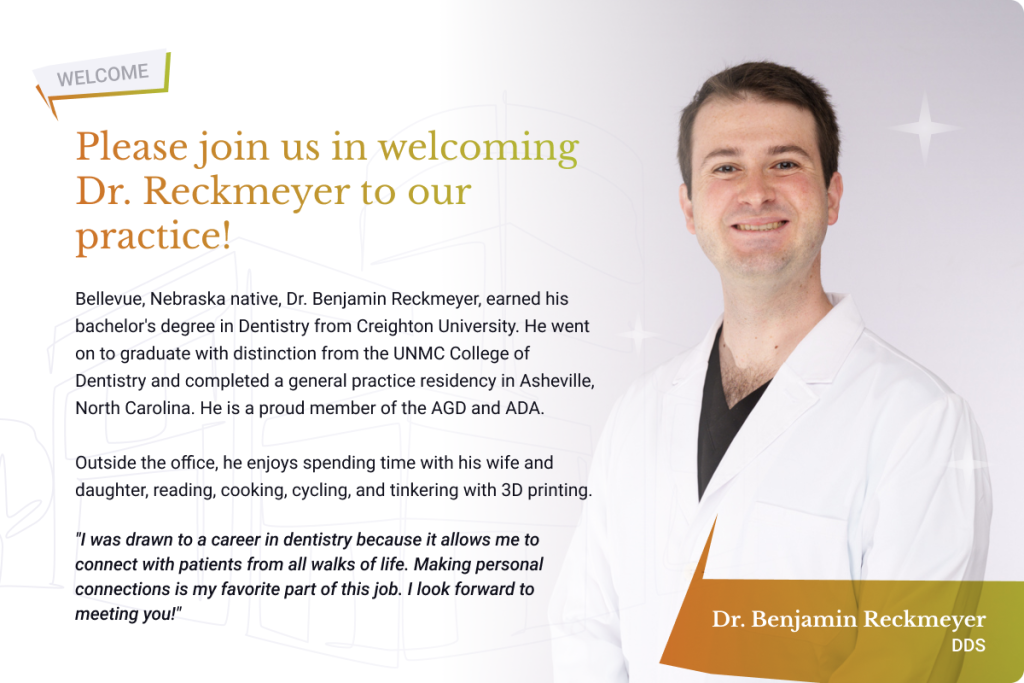Regenerative Endodontic Treatments
An Innovative Solution to Infected Root Canals
Regenerative endodontics is a cutting-edge approach to treating damaged or infected teeth and an alternative treatment for root canal therapy. This innovative procedure uses the body’s natural healing mechanisms to regenerate new tissue and restore the function of the affected tooth. While traditional endodontic treatments focus on removing damaged tissue, regenerative endodontics aims to restore the tooth to its natural state.
Learn more about this treatment with our experienced Manhattan dentist’s guide.
What Is Regenerative Endodontics?
Regenerative endodontics (RET) removes damaged or infected pulp tissue and places bioactive material into the root canal. This material contains growth factors and stem cells that promote the regeneration of new tissue, including the pulp and dentin, which make up the core of the tooth. Over time, this new tissue can restore the tooth’s natural function and structure.
The primary goal of RET is to achieve root maturation and apical closure, allowing the tooth to continue its normal development. This treatment approach is particularly beneficial for young patients whose teeth are still developing.
Traditional endodontic treatments such as root canal therapy (RCT) may result in thin and fragile roots, which can increase the risk of tooth fracture over time. RET, on the other hand, aims to stimulate root development, leading to stronger and more resilient teeth.
Benefits of Regenerative Endodontics
Regenerative endodontics offers several benefits over traditional endodontic treatments, including:
- Improved Success Rates: Studies have shown that regenerative endodontic procedures have higher success rates than traditional endodontic treatments, especially in cases of immature teeth with open apices (the tip of the root).
- Reduced Risk of Future Infections: Regenerative endodontic procedures help create a biologically active root canal system that can resist infections and promote long-term tooth health.
- Reduced Need for Dental Implants: Regenerative endodontics can help avoid dental implants or other restorative procedures, which can be more invasive and costly.
- Cost-Effective: While regenerative endodontic procedures can be more expensive than traditional treatments, they can be a cost-effective option in the long term by reducing the need for additional treatments or restorations.
- Natural and Biocompatible: Regenerative endodontic procedures use natural materials and techniques that are biocompatible to the patient’s body, reducing the risk of adverse reactions or complications.
Candidacy for Regenerative Endodontics
Unfortunately, not all patients are candidates for regenerative endodontic procedures. The following factors are considered when determining if a patient is a good candidate for regenerative endodontics:
- Age: Regenerative endodontic procedures are most effective in patients under 18 when root development is still in progress.
- Tooth Maturity: Teeth with immature roots and open apices are good candidates for regenerative endodontic procedures, as these procedures can promote new tissue growth and help the root develop.
- Pulp Vitality: Regenerative endodontic procedures are most effective in teeth with vital pulp tissue, as this tissue provides the necessary growth factors and stem cells for tissue regeneration.
- Infection Status: Teeth with active infections may not be good candidates for regenerative endodontics, as the infection can interfere with regeneration.
- Tooth Structure: Regenerative endodontic procedures are most effective in teeth with intact coronal structure, as this provides a protective barrier for the newly regenerated tissue.
- Overall Health: Patients with certain medical conditions or compromised immune systems may not be good candidates for regenerative endodontic procedures, as these procedures require a healthy immune response for successful regeneration.
The Regenerative Endodontics Process
Examination and Diagnosis
A dental professional will examine the infected tooth to determine the extent of the damage and whether regenerative endodontic treatment is an appropriate option.
Access and Cleaning
Your Location dentist will make an opening in the tooth to access the pulp chamber and root canal space. They’ll remove damaged or infected pulp tissue and thoroughly clean the root canal space.
Placement of Regenerative Material
They’ll introduce a regenerative material into the root canal space, which may include blood products, stem cells, growth factors, or other materials that stimulate new tissue growth.
Temporary Filling
Your dentist will place a temporary filling in the tooth to protect it while the new tissue develops.
Follow-up Appointments
You’ll need to return for several follow-up appointments to monitor the progress of the treatment and assess whether the new tissue is developing as it should.
Frequently Asked Questions
What are the limitations of regenerative endodontics?
While regenerative endodontics shows promise for treating immature permanent teeth with infected pulp, there are several limitations associated with this approach. Here are some common limitations:
- Patient age
- Pulp tissue condition
- Root canal anatomy
- Limited long-term data
- Time-consuming process
- Treatment complexity and expertise
- Limited application
How long does regenerative endodontic treatment take?
Regenerative endodontic treatment typically requires multiple appointments over several months to complete. The exact length of treatment will depend on factors such as the severity of the damage, the patient’s age, and the healing rate of the tooth.
Is regenerative endodontics covered by insurance?
Insurance coverage for regenerative endodontic treatment can vary depending on the patient’s policy and the treatment performed. Patients should check with their insurance provider to determine whether regenerative endodontic treatment is covered and to what extent. In some cases, insurance may only cover the cost of traditional root canal therapy, not regenerative endodontics.
Discover This New and Modern Dentistry Technique
Regenerative endodontics is a promising new approach to treating damaged or infected teeth. By using the body’s natural healing mechanisms, regenerative endodontics can promote the growth of new tissue and restore the function of the affected tooth. As research continues, regenerative endodontics will likely become an increasingly popular option for dental patients seeking to preserve their natural teeth.
Call our Manhattan practice at (785) 776-0097 today to schedule an appointment and learn more.



